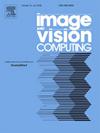Vision transformer enhanced with convolutional attention and graph convolution for semantic segmentation
IF 4.2
3区 计算机科学
Q2 COMPUTER SCIENCE, ARTIFICIAL INTELLIGENCE
引用次数: 0
Abstract
Semantic segmentation is a dense prediction task that assigns semantic labels to every pixel in an image. Effectively modeling global contextual information is a primary challenge in this task. Recently, some methods using Vision Transformer (ViT) encoders based on self-attention mechanisms have shown significant performance improvements. However, encoding spatial information purely through self-attention mechanisms tends to provide a more holistic representation and performs inadequately in handling object details. To address this, we propose a stripe depth-wise convolutional attention (SDCA) module. This module aggregates local convolution features at multiple scales as its attention map. Utilizing attention map generated by convolution at different scales effectively compensates for the limitations of self-attention mechanisms in handling object details. Additionally, to ensure the generation of more coherent predictions, we introduce a spatial feature graph convolution (SFGC) module to explicitly model the spatial relationships between patches. We apply these two modules in parallel to the output features of the Transformer block and add their output features to the original features for subsequent layer learning. Our method achieved mIoU scores of 50.5%, 59.1% and 55.0% on the COCO-Stuff-10K, PASCAL-Context and ADE20K datasets, respectively, surpassing some of the recent state-of-the-art methods.
基于卷积注意和图卷积增强的视觉转换器用于语义分割
语义分割是一种密集的预测任务,它为图像中的每个像素分配语义标签。有效地对全局上下文信息进行建模是该任务的主要挑战。近年来,一些基于自注意机制的视觉变换编码器在性能上取得了显著的进步。然而,单纯通过自注意机制对空间信息进行编码往往会提供更全面的表征,在处理对象细节方面表现不佳。为了解决这个问题,我们提出了一个条带深度卷积注意(SDCA)模块。该模块将多个尺度的局部卷积特征聚合为其注意力图。利用不同尺度卷积生成的注意图有效地弥补了自注意机制在处理对象细节方面的局限性。此外,为了确保生成更一致的预测,我们引入了空间特征图卷积(SFGC)模块来显式建模斑块之间的空间关系。我们将这两个模块并行地应用于Transformer块的输出特征,并将它们的输出特征添加到原始特征中,以供后续层学习。我们的方法在COCO-Stuff-10K、PASCAL-Context和ADE20K数据集上分别获得了50.5%、59.1%和55.0%的mIoU分数,超过了目前一些最先进的方法。
本文章由计算机程序翻译,如有差异,请以英文原文为准。
求助全文
约1分钟内获得全文
求助全文
来源期刊

Image and Vision Computing
工程技术-工程:电子与电气
CiteScore
8.50
自引率
8.50%
发文量
143
审稿时长
7.8 months
期刊介绍:
Image and Vision Computing has as a primary aim the provision of an effective medium of interchange for the results of high quality theoretical and applied research fundamental to all aspects of image interpretation and computer vision. The journal publishes work that proposes new image interpretation and computer vision methodology or addresses the application of such methods to real world scenes. It seeks to strengthen a deeper understanding in the discipline by encouraging the quantitative comparison and performance evaluation of the proposed methodology. The coverage includes: image interpretation, scene modelling, object recognition and tracking, shape analysis, monitoring and surveillance, active vision and robotic systems, SLAM, biologically-inspired computer vision, motion analysis, stereo vision, document image understanding, character and handwritten text recognition, face and gesture recognition, biometrics, vision-based human-computer interaction, human activity and behavior understanding, data fusion from multiple sensor inputs, image databases.
 求助内容:
求助内容: 应助结果提醒方式:
应助结果提醒方式:


